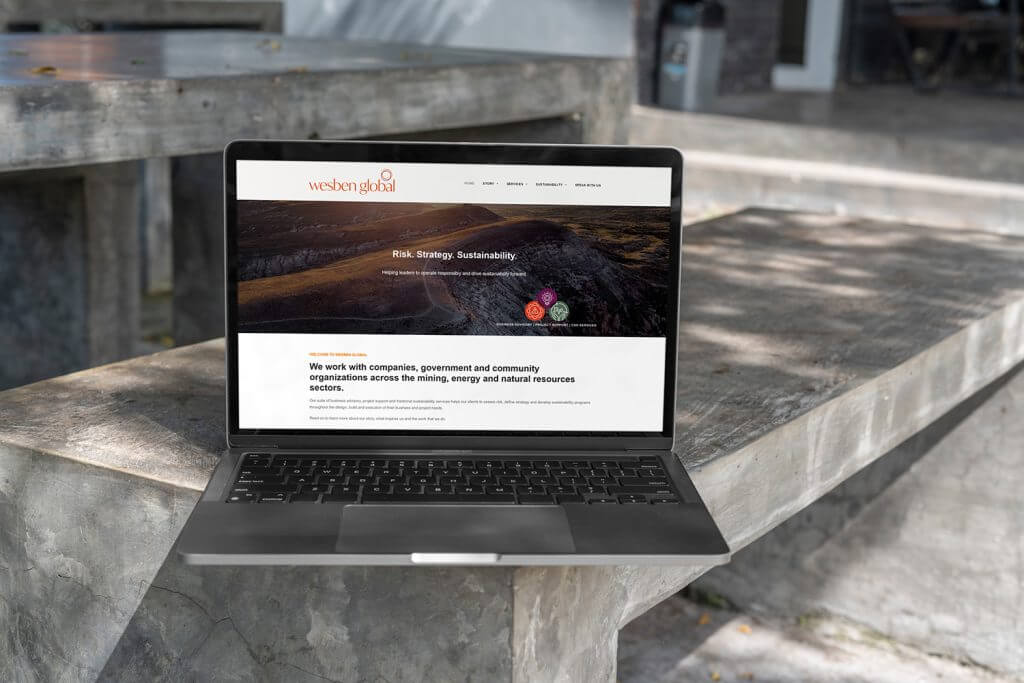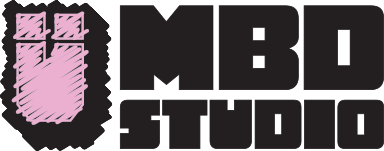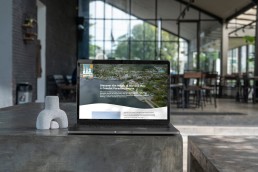Why the New ChatGPT is a Must-Have for Modern Businesses
At Michael Broley Development, we're always looking for tools and technologies that can enhance our productivity and improve our clients' services.
One such tool that has blown us away in some late night testing is the latest version of ChatGPT v.4o.
One of the standout improvements in the newest version of ChatGPT is its enhanced understanding of context and improved responsiveness. AI can now comprehend and respond to queries with greater accuracy and relevance. For us, this translates to more efficient client interactions. Whether addressing client inquiries, providing detailed explanations of our services, or offering personalized recommendations, ChatGPT ensures that our communication is always clear, concise, and on point.
The new ChatGPT offers advanced customization options, allowing us to tailor the AI's responses to align better with our brand voice and business goals. This is particularly beneficial in maintaining consistency across all client touch points. By customizing ChatGPT to reflect our unique approach and values, we can ensure that every interaction reinforces our commitment to excellence and client satisfaction.
In a fast-paced environment, multitasking is a critical skill. The latest version of ChatGPT excels in this area by seamlessly handling multiple tasks simultaneously. From managing scheduling and setting reminders to drafting emails and generating reports, ChatGPT acts as a reliable virtual assistant, freeing up valuable time for our team to focus on strategic initiatives and client engagement.
With the increasing importance of data security, the new ChatGPT has been designed with robust security features to protect sensitive information. This is a significant advantage, ensuring all client data and internal communications remain secure and confidential. By integrating ChatGPT into our operations, we can confidently leverage its capabilities without compromising data privacy.
The improvements in ChatGPT's processing speed and efficiency directly contribute to enhanced productivity.
ChatGPT enables our team to operate more efficiently by automating routine tasks and streamlining workflows. This boosts our overall productivity and allows us to deliver faster and more reliable service to our clients.
"The latest version of ChatGPT is a testament to how AI can transform business operations. If you're looking to integrate AI into your business and take your operations to the next level, reach out to us today. Let's explore how these advancements can benefit your company."
At Michael Broley Development, embracing innovation is at the core of our business strategy. The newest version of ChatGPT exemplifies the cutting-edge technology that helps us stay ahead of the curve. With its enhanced understanding, advanced customization options, improved multitasking capabilities, robust data security, and increased efficiency, ChatGPT is set to become an invaluable asset in our toolkit.
We look forward to leveraging these new features to continue providing exceptional service to our clients and driving their success.
Stay tuned for more updates on how we're integrating ChatGPT into our daily operations and its positive impact on our business.
The Drive to Excel: Embracing Professional Competition in Business
In business, the spirit of competition is not just inevitable; it's instrumental. It's a force that compels companies and professionals alike to constantly push their limits and redefine standards of excellence. At Michael Broley Development, we recognize that competition is not about rivalry or conflict but the relentless pursuit of excellence—a pursuit deeply rooted in a professional, emotion-free commitment to being the best.
My tenure at leading corporations like Xerox and Salesforce shaped my understanding of competitive dynamics. At Xerox, the competition wasn't just about outperforming others; it was about continually surpassing our benchmarks and expectations to deliver unmatched value to our clients. Salesforce further honed my perspective, embedding a culture where competition catalyzes innovation and growth. These experiences underscored an important lesson: in business, the real competition is with oneself, striving to improve, innovate, and lead more effectively every day.
This outlook aligns closely with a valuable piece of wisdom imparted by my father, which has profoundly influenced my professional demeanour. In business, there is no good or bad news, just news. This philosophy teaches us to approach every piece of information—every data point, feedback, or market shift—with a pragmatic perspective.
It's not about the emotional weight of the news but how we harness it to adapt and advance. This neutral approach to information is crucial in a competitive landscape, empowering us to make informed, strategic decisions that are not clouded by emotion but guided by logic and potential.
At Michael Broley Development, we apply these principles to survive and thrive in the competitive fields of branding and web development. Professional competition pushes us to continuously refine our skills, expand our services, and innovate our approaches. It encourages us always to look forward, anticipate changes, and be ready to meet the future head-on with solutions that set new industry standards.
In conclusion, embracing competition professionally means perpetually seeking excellence without emotional bias. It's about viewing every challenge as an opportunity to excel and every competitor as a benchmark to surpass.
In doing so, we not only elevate our standards but also contribute positively to the evolution of our industry, fostering a future filled with innovation and growth.
Why Your Website Is A Living Entity in the Digital Ecosystem
In today's fast-paced digital world, simply setting up a website and leaving it unattended needs to be updated and more effective. For professionals seeking to establish a robust online presence, it's crucial to understand that a website is much more than just a launch-and-leave project. Like any vital enterprise asset, it requires continual nurturing, updates, and adaptations to stay relevant and perform optimally.
As technologies evolve and business needs change, your website, too, must grow and adjust to maintain its effectiveness and ensure it meets your professional goals. This dynamic approach is essential for any business to thrive in the competitive digital landscape.
Launch: Just the Beginning
Think of launching your website as the birth of a living entity. It's an exciting moment filled with potential and promise, marking the start of a new presence in the digital world. But like any newborn, a website's initial launch is just the beginning of a much longer journey. It's the foundation upon which continuous growth and development must occur to thrive in an ever-changing environment.
There's a common misconception that a website's job is done once it's built and launched. Many expect their digital platform to attract visitors, engage customers, and maintain itself automatically. However, the reality is far different. Just as a living organism requires ongoing care and sustenance, a website needs continuous management, updates, and optimization. Without regular attention and updates, even the most beautifully designed website can become obsolete, lose relevance, and fail to serve its intended purpose effectively.
Nourishment: Content Updates and SEO
The saying "Content is King" remains unequivocally true in the digital realm. Regularly updating your website with fresh, relevant content is not just beneficial—it's essential. Fresh content keeps your website lively and engaging for returning visitors and can attract new ones by providing value they cannot get elsewhere. Moreover, regularly updated content can help establish your site as a thought leader in your industry, encouraging visitors to rely on your site as a go-to resource.
Just as a living organism needs regular nourishment to grow and survive, your website requires a steady stream of new content to maintain and improve its health regarding search engine rankings. Search engines favour dynamic websites, offering new and updated content because it indicates that the website is active and relevant to users today. By continuously feeding your website with high-quality content, you enhance its visibility and ranking, which, in turn, drives more traffic, nurtures leads, and, ultimately, ensures the survival and success of your digital presence.
Growth: Adapting and Evolving
Listening to user feedback and analyzing website analytics are crucial for your website's ongoing evolution. This feedback is like direct communication from your website's users, telling you what works, what doesn't, and what they need or expect from your site. By actively responding to this feedback and making necessary adjustments, you ensure that your website remains user-centric and continues to serve your audience effectively. This ongoing dialogue between your website and its users is essential for maintaining relevance and enhancing user satisfaction.
Keeping up with the latest web technologies and design trends is not just about aesthetics but also functionality and user experience. As the digital landscape evolves, so do users' expectations. Websites that stay current with technological advancements and trends look modern and appealing and perform better. These updates can include anything from backend improvements that speed up your site to new design trends that make your website more interactive and engaging. Staying updated ensures your website remains competitive and appealing to visitors.
Health Checks: Regular Maintenance
Just like regular health check-ups are crucial for maintaining personal well-being, routine maintenance is vital for a website's health and performance. Regularly checking your website for issues—like broken links, outdated content, and slow loading times—helps prevent minor problems from becoming major ones that could affect user experience and site functionality. Scheduled maintenance ensures your website operates smoothly, providing users with a seamless experience and optimizing search engine rankings performance.
In an ever-evolving digital world, the importance of security cannot be overstated. Regular security updates are akin to a living organism adapting to environmental changes for protection. This means implementing patches and updates to safeguard against new threats, vulnerabilities, and hacks for websites. Keeping your website secure protects your company's data and visitors' sensitive information, maintaining trust and compliance with global security standards.
Providing Value: Engaging With Customers
Continuously improving the user experience (UX) is critical to retaining visitors and converting them into customers. A well-designed UX streamlines the interaction between your potential customers and your website, making it easy for them to navigate, find information, and make decisions. This ongoing optimization process involves understanding user behaviours, preferences, and pain points and refining the website to address these aspects effectively. Enhancements like faster load times, intuitive navigation, and mobile responsiveness all contribute to a superior user experience that keeps users returning.
Integrating various interactive tools, blogs, and social media elements is essential to keep your website dynamic and engaging. Tools such as live chat support, interactive FAQs, and feedback widgets can make your website more interactive, providing immediate value to users and encouraging them to engage with your content. Regularly updated blogs offer fresh content that not only aids in SEO but also gives users a reason to return. Social media integration allows for seamless content sharing and fosters community around your brand, which enhances user engagement and extends your reach online.
Conclusion: The Ongoing Journey
Like any living organism that thrives on continuous care and adaptation, your website requires ongoing commitment and attention to flourish within the dynamic digital ecosystem. The digital world is ever-evolving, and maintaining an effective, engaging online presence necessitates regular updates, security measures, and user experience enhancements.
Consider your website not just a one-time investment but an integral, living part of your business that needs continual nurturing. Embrace the journey of growth and adaptation—see it as an opportunity to evolve and better connect with your audience constantly.
Contact us today if you're ready to take your website to the next level and ensure it remains vibrant and compelling. Let's work together to keep your digital presence as alive and thriving as your business.
The Ultimate Guide to Hiring a Web Development & Branding Agency
In today's fast-paced digital landscape, carving out a solid online presence is no longer just an advantage—it's an essential cornerstone for any business looking to thrive and stand out. The importance of this digital foundation cannot be overstated, highlighting the necessity of partnering with the correct branding and web development experts. These are the architects of your online identity, equipped with the skills and vision to bring your unique brand to life in the digital realm, creating a platform that attracts, engages, and inspires. 
This guide springs from a candid conversation with Ashley MacPhee, a renowned wedding photographer, who highlighted the shared challenges many face when sifting through the vast sea of vendors in today's market. Her insights underscore the universal quest for the perfect partnership—one that transcends mere transactions to craft experiences that embody your brand's essence and speak directly to the hearts of your audience.
As we look into the nuances of defining your project's ambitions and pinpointing your target demographic, the crux of this guide centres on the critical decision-making process of choosing a partner. This choice is instrumental in ensuring your brand does more than just appear across digital platforms—it must echo, engage, and leave a lasting imprint on those who encounter it.
Understanding Your Needs
Embarking on the journey of branding or rebranding your business, coupled with web development, requires a well-defined strategy rooted in a deep understanding of your brand's core values and goals. This process begins with the crucial step of clarifying your vision. It's an introspective dive into what your brand embodies and the impact you aspire to have on your audience, transcending mere aesthetics to encompass both purpose and functionality. Reflect on your brand's mission, the objectives behind establishing or revamping your identity, and the specific functionalities your website requires to achieve your business goals, whether through e-commerce solutions, booking systems, or showcasing a portfolio.
Equally important is defining your audience. Crafting a brand and a website that resonates and communicates effectively means thoroughly understanding who your customers are. It involves anticipating their interactions with your website and ensuring the user experience is seamless, engaging, and reflective of their needs and preferences. This foundational knowledge guides every strategic decision in branding and web development, ensuring that every element, from design to content, fosters a meaningful connection with your audience.
Clarify Your Vision
Clarifying your vision involves deep reflection on what your brand stands for and how you want it to be perceived online. It's more than aesthetics; it's about purpose and functionality. Ask yourself:
- ✅ Purpose: What is the core mission of your brand? How do you want to impact your audience?
- ✅ Goals: Are you creating a brand identity from scratch, or is the aim to refresh and modernize an existing brand? Each path requires different strategies and outcomes.
- ✅ Website Functionality: What functionalities does your website need to fulfill your business objectives? Consider e-commerce capabilities, booking systems, blogs, or portfolios. Identifying these early is essential to ensure your web development partner can cater to these needs.
Define Your Audience
Understanding your audience is critical for creating resonant branding and a website that communicates with them. Consider the following:
- ✅ Demographics: Who are your customers? What are their ages, interests, jobs, and lifestyles? Understanding these aspects helps tailor your branding and website design to appeal directly to your target audience.
- ✅ User Experience (UX): How does your target audience interact with websites? What design and functionality elements will make their experience seamless and enjoyable? The UX should be a key consideration in your website's design, ensuring it's intuitive and accessible for your intended users.
- ✅ Engagement: How do you want your audience to feel and react when they see your brand online? This emotional connection can guide the visual and textual elements of your branding and web design.
Researching Potential Partners
Choosing the right professional for your branding and web development needs is pivotal to your project's success. It's not just about hiring talent; it's about partnering with someone whose vision, expertise, and working style align seamlessly with your objectives. This is where the significance of a comprehensive portfolio review and the insightful feedback from testimonials come into play. 
A meticulously curated portfolio is more than a mere collection of past works; it serves as a critical lens through which you can understand a professional's approach, creativity, and technical acumen. Meanwhile, testimonials and references offer a deeper dive into the professional's reliability, efficiency, and the tangible impact of their work on clients' success. Together, they provide a well-rounded view, ensuring you make an informed decision rooted in alignment, industry relevance, and demonstrated technical proficiency.
Portfolio Review
A portfolio is more than a showcase; it's a window into a professional's approach to branding and web development:
- ✅ Style Alignment: Ensure their aesthetic sensibilities align with your brand's vision. A diverse portfolio can also indicate adaptability.
- ✅ Industry Relevance: Look for projects within your industry or those with similar complexities. This relevance can assure you of their ability to understand and meet your needs.
- ✅ Technical Proficiency: Assess the use of technology and trends. The professional must be up-to-date and capable of implementing modern web solutions.
Testimonials and References
Testimonials and direct references are invaluable for gaining insight into the professional's working style and reliability.
- ✅ Satisfaction and Results: Seek testimonials that speak to the quality of work and the client's satisfaction. Pay attention to mentions of meeting deadlines, responsiveness, and problem-solving abilities.
- ✅ In-depth Insights: When contacting references, inquire about the collaboration process, project management, and the professional's ability to adapt to feedback and changes.
- ✅ Long-term Value: Try to gauge the lasting impact of their work on the client's business. Success stories or case studies can be particularly telling.
"Micheal has truly proven to be an excellent partner to work with. He's undertaken a remarkable transformation of my brand and website while staying true to my core values – a feat that's not easy to achieve."
-Christine, CEO, Toronto Professional Women's Meetup
Evaluating Technical and Creative Skills
In a world where technology and creativity intersect, the success of your digital presence hinges on finding professionals who excel in branding and web development. This guide outlines how to identify experts who not only understand your vision but can also bring it to life with a unique blend of strategic branding and technical skills.
A proficient branding expert will align with your core values and audience, crafting a standout identity. Clear communication and consistency across platforms are vital indicators of their expertise. On the web development front, technical proficiency in modern technologies, responsiveness, and user experience are essential, complemented by a creative flair that distinguishes your site from the digital landscape.
Branding Expertise
Choosing a professional with a strategic approach to branding is critical. They should understand your brand's core values, target audience, and competitive landscape to craft a unique identity that stands out. Effective communication of their branding strategy, including visual and verbal identity, is essential. Their ability to tell your brand's story compellingly, ensuring consistency across all platforms, reflects their expertise in branding.
- ✅ Strategic Approach: Confirm their ability to devise a branding strategy that captures your brand's essence and differentiates it in the market.
- ✅ Communication Skills: Ensure they clearly articulate their branding process and how it aligns with your business objectives.
- ✅ Consistency Across Platforms: When evaluating a professional's branding consistency, they should provide examples showing uniform use of logos, color schemes, and typography across digital platforms like websites and social media, as well as in physical formats such as business cards and brochures. This consistency helps in maintaining a cohesive brand identity.
Web Development Proficiency
Evaluating a professional's technical skills in web development involves understanding their proficiency with current technologies and trends. They should be knowledgeable in responsive design to ensure your website is mobile-friendly, e-commerce integrations for online sales capabilities, and content management systems for more accessible website updates. Their ability to implement features that enhance user experience, optimize for search engines, and ensure security is also crucial. 
- ✅Technical Skill Set: Verify their expertise in essential web technologies relevant to your project (e.g., HTML5, CSS3, JavaScript, responsive design).
- ✅ E-commerce and CMS: Assess their experience with e-commerce platforms and content management systems, which are crucial for dynamic website functionality.
- ✅ Future-proofing: Ask about their approach to building scalable and adaptable websites, ensuring your site can evolve with your business.
- ✅ Creative Flair: Beyond technical skills, assess their ability to deliver innovative and original design solutions that can set your brand apart in a crowded digital landscape.
"I'd recommend Michael over and over again! In fact, we're already working on my next website and brand! Thank you, Michael, for your creativity and hard work and for believing in me and my business!"
- Andrea, Founder, Toronto Dating Hub
Understanding the Process
Navigating the complexities of a branding or web development project requires clear communication, collaboration, and a well-defined approach to timelines and budgets. These components ensure a project's success, align expectations, and foster a productive partnership. Let's explore how to ensure effective communication and collaboration with your chosen professional and how to set realistic timelines and budgets for your project.
Communication and Collaboration
- ✅ Process Transparency: Look for a partner who clearly outlines their workflow, ensuring you understand each project phase.
- ✅ Active Participation: Choose someone who values your input and offers avenues for your ideas and feedback throughout the project.
- ✅ Regular Updates: Ensure they commit to providing frequent project updates, keeping you informed of progress and any challenges encountered.
Timeline and Budget
- ✅ Clear Timelines: A reliable partner will establish a realistic timeline and set milestones for critical project phases.
- ✅ Budget Transparency: Seek a professional who is upfront about costs and provides detailed quotes to avoid surprises later.
- ✅ Flexibility and Realism: The right partner will help you understand the scope of your project with your budget and timeline, advising on adjustments if necessary.
 Post-Launch Support
Post-Launch Support
Maintenance and Updates
Website maintenance and updates are crucial for keeping your site relevant and functioning optimally. This involves regular checks for issues, updating content to keep it fresh, and ensuring all software is up to date to prevent security vulnerabilities. Additionally, your website may need to scale as your business grows to accommodate increased traffic or new functionalities. A reliable partner will have plans and processes in place for regular maintenance and be ready to assist with website expansion when needed.
- ✅ Regular Check-ins: Schedule monthly or quarterly reviews to identify and resolve technical issues.
- ✅ Content Refresh: Update your website content regularly to keep it relevant and engaging for visitors.
- ✅ Software Updates: Ensure all website software is up to date to secure against vulnerabilities.
- ✅ Scalability Planning: Discuss potential future needs and ensure your partner can accommodate growth through increased traffic handling or adding new features.
SEO and Analytics
SEO (Search Engine Optimization) and analytics play a pivotal role in your website's success by improving visibility and tracking performance. A knowledgeable partner will implement SEO best practices to enhance your site's ranking in search engine results, making it easier for your target audience to find you. Furthermore, they should be adept at utilizing analytics tools to provide insights into your website's traffic, user behaviour, and overall performance, enabling informed decisions to optimize your online presence.
- ✅ Keyword Strategy: Develop and regularly update your keyword strategy based on trends and analytics insights.
- ✅ Performance Monitoring: Use tools like Google Analytics to monitor website traffic, user behaviour, and conversion rates.
- ✅ SEO Audits: Conduct regular SEO audits to identify areas for improvement and implement changes to enhance visibility.
- ✅ Reporting: Ensure you receive regular, understandable reports on your website's performance and the impact of SEO efforts.
"I never would have taken the step to create a website without Michael's help. He is knowledgeable and he knows how to make everything fit together and look just right. He has a great eye for detail. I am so pleased with the final product and with the service that Michael provided!"
-Melanie, Owner, Sweet Spot Farm
Making Your Decision
Aligning with Values
Choosing a branding or web development partner goes beyond technical skills; it's about finding a team whose core values resonate with your own. This introduction underscores the importance of partnering with professionals who understand your business needs and share your ethical standards and business philosophy, paving the way for meaningful and long-lasting collaboration. 
- ✅ Research Mission and Culture: Read the potential partner's mission statement, culture, and past projects to ensure they match your ethical standards and business philosophy.
- ✅ Social Responsibility and Sustainability: If these are important to your brand, seek partners who prioritize them in their operations and projects.
- ✅ Long-Term Goals Compatibility: Discuss long-term visions to ensure both parties work towards similar objectives, enhancing synergy.
Trust Your Instinct
At the heart of any successful partnership lies fundamental trust and mutual respect.
- ✅ Personal Connection: Reflect on your interactions. Do they leave you feeling positive and confident in their capabilities?
- ✅ Communication Style: Consider if their communication style complements yours, making collaboration seamless.
- ✅ Excitement for the Project: Gauge their enthusiasm. A genuinely interested partner will often contribute more creatively and invest more effort into ensuring the project's success.
"Launching a business was stressful, but Michael made it so that my website and branding came together flawlessly. I'm so grateful for Michael's creativity and accessibility; I highly recommend!!"
-Katelyn Whitney, Founder, Suspend This
Conclusion
Choosing the correct branding and web development partner is a journey that extends beyond mere business decisions; it's about making your future vision a tangible reality. Inspired by a discussion with a talented wedding photographer, this guide reflects on the common challenges many face in today's cluttered vendor landscape.
It emphasizes the necessity of a systematic approach, combining diligent research, strategic alignment, and intuitive insight to understand not just your project's immediate needs but also its long-term ambitions. This comprehensive advice aims to arm you with the knowledge to select a partner who will fulfill your current objectives and drive your brand toward continuous growth and success in the dynamic digital world.
Don't hesitate to reach out if you have questions or are contemplating this pivotal journey. Let's ensure your digital presence is visible, vibrant, and resonant.
Out with the Bold, In with the #FFADED: Our New Brand Hue Revealed
FOR IMMEDIATE RELEASE
[Mahone Bay, NS] – Michael Broley Development, a leader in innovative web development and branding solutions, today announced a vibrant evolution of its brand identity with the introduction of a new brand color: Faded Pink, codenamed #FFADED. This refreshing update marks a significant pivot from the company's signature hot pink, a homage to its Barbie-inspired roots, towards a lighter, more subdued hue that represents the company's growth.... and the widespread adoption of pink in 2024.
"Over the years, our original hot pink has been a symbol of our bold, youthful approach to digital solutions. However, as we've evolved, so has our vision. Our new shade, #FFADED, is not just a color—it's a statement. It signifies a matured palette while retaining our playful heart," said Michael Broley, Founder of Michael Broley Development.
The choice of #FFADED is a nod to staying young at heart and embracing a relaxed, joyful approach to business and creativity. The term "faded," often associated with being under the influence of cannabis and characterized by a noticeable change in behavior or appearance, humorously reflects the company's transition to a lighter pink shade. "It's about softening the edges while fully embracing the dynamic and transformative nature of the digital world," Broley added. "And yes, we're in on the joke. Let's get faded!"
This brand evolution comes at a pivotal moment for Michael Broley Development as it continues to expand its offerings beyond traditional web development and branding into comprehensive digital strategy, including content creation, e-commerce development, and AI-driven solutions. The new pink #FFADED symbolizes a broader perspective, reflecting the company's adaptability and commitment to staying ahead of digital trends.
"Change is constant in the digital landscape, and our brand refresh with #FFADED is a bold step forward. It's lighter, it's fresh, and it perfectly captures our ethos of innovation, youthfulness, and a slightly cheeky sense of humor," stated Broley.
Clients, partners, and fans of Michael Broley Development can expect to see the new #FFADED brand color rolling out across all platforms, marketing materials, and digital presences in the coming weeks. This rebranding effort underscores the company's dedication to evolving with the times while staying true to its core values of creativity, technical expertise, and empowering small businesses.
About Michael Broley Development
Michael Broley Development is a cutting-edge web development and branding firm that specializes in transforming the online presence of small businesses. With a comprehensive suite of services that marry unique brand values with the latest digital solutions, Michael Broley Development is committed to crafting visually captivating and functional websites, empowering clients with the tools for success in the competitive digital landscape.
The Art of Digital With Michael Broley Development
In the rapidly evolving digital landscape, the necessity for small businesses to establish a robust online presence cannot be overstated. Leading this transformative journey is Michael Broley Development, where advanced web development and branding converge with a spectrum of content creation services to redefine digital engagement.
Michael, at the helm, brings a wealth of expertise in web development, branding, photography, and graphic design, specializing in elevating the digital profiles of small businesses. His approach meticulously blends each business's unique brand values with sophisticated digital solutions, resulting in websites that are not only visually engaging but also functional and manageable for the owners.
This strategic combination of creativity, technical skill, and dedication to client empowerment has solidified Michael’s role as a crucial partner for small businesses aiming to navigate and thrive in the competitive online environment. Michael Broley Development is committed to enhancing the digital presence of small businesses, ensuring they achieve sustainable success through strategic web development and branding efforts.
From crafting unforgettable brands to integrating cutting-edge artificial intelligence into your business processes, our goal is to set your business apart in the bustling digital landscape of Nova Scotia and beyond.
Michael Broley Development is more than just a web development firm; it's a holistic digital workshop where creativity meets technical prowess. With a rich portfolio that spans various industries, we have empowered businesses to redefine their online narratives through a unique blend of services.
Branding: The Art of Connection
In the crowded marketplaces of today, a strong brand identity is your silent ambassador. At Michael Broley Development, branding is approached as an art form—a means to connect your business's core values with the hearts of your audience. Through immersive discovery sessions, we dive deep into the ethos of your business, emerging with a brand strategy that encompasses logo design, visual identity systems, and brand voice development.
Our work is designed to not only capture the essence of your brand but to ensure it resonates with your target audience, fostering a sense of loyalty and community around your business.
Artificial Intelligence: Future-Proofing Businesses
The future of business lies in automation and intelligent insight, areas where artificial intelligence shines. Michael Broley Development leverages AI to streamline operations, enhance content creation, and optimize workflows, turning challenges into opportunities.
Whether it’s developing AI-driven content strategies that captivate your audience or implementing smart business processes that save time and resources, our AI solutions are customized to your specific needs. Our approach demystifies AI, making it accessible and practical for small businesses looking to gain a competitive edge in their industry.
Shopify Development: Crafting Digital Storefronts
E-commerce is not just selling online; it’s about creating an immersive shopping experience that reflects your brand’s essence. Specializing in Shopify development, Michael Broley Development transforms your online store into a digital destination that attracts, engages, and converts. From custom theme design to the seamless integration of sales and marketing tools, we ensure your e-commerce platform is a robust, scalable foundation for your business’s growth.
Our expertise in Shopify empowers businesses to excel in the digital marketplace, with strategic insights that drive traffic and boost sales.
E-mail Marketing: Engaging Conversations
At the heart of effective digital marketing is communication, and e-mail marketing offers a direct line to your audience. Michael Broley Development crafts e-mail marketing campaigns that build meaningful connections. Utilizing platforms like MailChimp, HubSpot, and Klaviyo, we design personalized e-mail experiences that resonate with your audience.
From newsletter design to automated e-mail sequences, our strategies are data-driven and creatively inspired, designed to enhance customer loyalty and drive engagement.
Web Development: The Digital Foundation
Your website is the cornerstone of your online presence—a digital home where your brand lives and breathes. At Michael Broley Development, we specialize in creating websites that are not only aesthetically pleasing but functionally superior.
Whether you prefer the flexibility of Squarespace or require a custom-built solution, our web development services focus on delivering responsive, SEO-friendly websites tailored to your business needs. Our process involves a collaborative approach, ensuring your website not only meets but exceeds your expectations, setting the stage for your digital success.
Content Creation: Captivating Visuals That Tell Your Story
In a landscape where visuals reign supreme, Michael Broley Development elevates your brand with professional photography and videography services. From expressive headshots and detailed product images to dynamic event coverage and storytelling videos, we specialize in creating visual content that resonates.
Our integrated approach ensures your visuals not only captivate but also align seamlessly with your digital presence, reinforcing your brand identity and engaging your audience across all platforms.
Partnering for Your Digital Future
At Michael Broley Development, we believe in the power of partnership. Working with us means not just hiring a service provider but collaborating with a dedicated ally in your business’s journey towards digital excellence. Our commitment to your success is reflected in our work, our approach, and the lasting relationships we build with our clients.
Are you ready to transform your digital presence and propel your business forward? Let’s connect and explore how Michael Broley Development can bring your digital aspirations to life. Together, we can create a digital narrative that not only tells your story but elevates your business to new heights.
The Professional and Personal Benefits of a Dedicated Office Space
After years of blending my living space with my workspace, the decision to move my office out of my house has had a surprisingly profound impact on my life. This transition, driven by a desire for a clearer separation between personal and professional life, has led to significant changes in my daily routine, happiness, and overall productivity.
One of the most immediate changes I noticed was an increase in my overall happiness. The physical separation of work and living spaces has allowed me to mentally compartmentalize my responsibilities, reducing stress and increasing satisfaction in both domains. This clear delineation helps me leave work at work, preserving my home as a sanctuary for relaxation and personal pursuits. The establishment of a separate office space has greatly contributed to a healthier work-life balance. My personal life is no longer overshadowed by the constant presence of work. Interestingly, this separation has made my interactions with technology more intentional; I use my PC for work and my Mac for personal life, which has minimized the overlap and enhanced my focus in both areas.
Not only has my productivity seen a resurgence, but the state of my home and the quality of my relationships have also improved. With fewer distractions and a dedicated focus on work during office hours, I find my home to be tidier and more peaceful. My wife enjoys her alone time fully, and our time together is more quality-driven, grounded in the present and free from the subtle intrusion of work.
Returning to a level of productivity I hadn't experienced in years has been one of the most rewarding outcomes of this transition. The structured environment of the office, alongside the mental shift that occurs when I step into this space, has sharpened my focus and efficiency. It's a reminder of how physical and mental spaces can profoundly impact our ability to concentrate and achieve our goals.
This move has taught me the invaluable lesson that sometimes, to move forward, we need to step back and reassess the foundations of our daily routines. The establishment of a separate office space has not only benefited my work but has also enriched my personal life, offering a clearer perspective on what truly matters. The experience has been a testament to the power of structure and the importance of nurturing spaces that allow us to flourish both personally and professionally. While this transition may not directly correlate with every aspect of my work in web development and branding, it underscores the universal need for balance and well-being in our pursuit of success and fulfillment.
Timepiece or Tech Piece? Reevaluating the Apple Watch Experience
As a seasoned adventurer in the vast expanse of the Apple ecosystem, embarking on a journey after a decade-long hiatus felt like returning to a familiar harbor. My sails were set, and the winds of innovation whispered tales of marvels like the iPhone and MacBook Air, devices that seamlessly wove themselves into the fabric of my daily life. Ah, but then came the Apple Watch, a beacon of promise on my wrist, destined, I believed, to chart new territories of convenience and connection.
In the initial swirl of excitement, the Apple Watch was a marvel, a sleek testament to technology's prowess, dangling not just from my wrist but from the precipice of potential. Notifications, those tiny pings of existence, made their way from the ether of the digital realm to the tangible reality of my wrist. Yet, as the days unfurled like the pages of a novel whose plot thickens with unexpected twists, a revelation dawned upon me: this constant digital murmuring was more an intrusion than an aide-mémoire. Was there a missive so urgent that it necessitated a buzz on my wrist, pulling me from the moments I inhabited? The jury in my mind deliberated and found the verdict leaning towards distraction.
Then came the night, and with it, the watch's promise to unveil the mysteries of my slumber. Cool, I thought, a window into the nocturnal odysseys of my own making. Yet, as nights passed into weeks, the allure of numbers and patterns tracing my journey to the land of dreams waned. It was interesting, no doubt, but the excitement of this digital lullaby soon faded into the background hum of my routine.
Amidst these reflections, there were moments of whimsy—the moon phase display, a tide chart that whispered of distant shores and the eternal dance between the earth and its celestial partners. These features, though enchanting, were stars in a sky already mapped by my phone. The realization that these tidbits of information, while lovely, were not necessities, cast a shadow of doubt over my wrist-bound companion.
And so, two months have passed. My Apple Watch, once a beacon of technological integration, now finds itself in a limbo of utility. It's not that I disdain it—far from it. There's a certain charm in having the cosmos strapped to your wrist, a testament to human ingenuity. But in this era of constant connectivity, I find myself yearning for simplicity, for moments unencumbered by the incessant buzz of notifications, for the joy of discovering the moon's phase not because my watch tells me, but because I looked up at the night sky.
This tale isn't one of disillusionment but of discovery. In my quest to simplify web development and branding for small businesses, I've learned the value of tools that truly enhance our lives and work. The Apple Watch, with its suite of features, is a marvel of technology, but it's also a reminder that not every innovation aligns with the rhythms of our individual lives.
In the grand tapestry of the digital age, I'm reminded of the importance of choosing our companions wisely, be they of silicon or flesh. And so, as I continue to weave the narratives of small businesses into the digital realm, I carry with me the lesson of the Apple Watch—a beacon not of necessity but of the luxury of choice in how we engage with the world around us.
So here's to the whimsy of technology and the quest for meaningful connection, both online and off. May we all find the tools that resonate with our spirits and elevate our daily journeys through this wondrous digital age.
Edit - April 21, 2024: I sold the Apple Watch. I just, didn't enjoy it and really missed wearing my collection of traditional watches. This is my third smart watch. The original Samsung Galaxy Watch, The Galaxy Watch 3 and now the Apple Watch 9. I'm done with them... they don't bring me joy.
Transform Your Tourism Business Online with TDAP and Our Expert Digital Solutions
In today's digital age, having a strong online presence is more critical than ever, especially for businesses in the tourism sector. Recognizing this, an exciting opportunity has emerged for tourism businesses in Nova Scotia—the Tourism Digital Assistance Program (TDAP). This initiative, a partnership between Tourism Nova Scotia and Digital Nova Scotia, offers up to $5,000 in digital services to help businesses like yours attract visitors and encourage tourism spending through enhanced online marketing efforts.
What Does TDAP Offer?
TDAP is designed to support tourism businesses in elevating their digital footprint. Eligible activities under this program include:
- E-commerce solutions
- Online booking systems
- Website development
- Copywriting services
- Professional photography and videography
- Social media marketing
How Can We Help?
We specialize in crafting bespoke web development, branding solutions, and professional photography services for small to medium-sized businesses. Our expertise perfectly aligns with the goals of TDAP, and we are proud to be an approved vendor for photography services through the program. Here’s how we can help:
- Branding & Web Development: We create dynamic, user-friendly websites and shape unique brand identities that tell your story in a way that resonates and endures.
- E-Mail Marketing: Our targeted email campaigns are designed to engage your audience and inspire action, driving growth for your business.
- Shopify Development: For businesses looking to enhance their e-commerce capabilities, our customized Shopify solutions power successful online stores, making shopping seamless for your customers.
- Professional Photography: As an approved TDAP vendor for photography, we offer professional photography services to showcase your business in the best light, enhancing your online presence and marketing materials.
Why Act Now?
The deadline to apply for TDAP is swiftly approaching—Wednesday, April 3, at 4:00 p.m. This is a unique opportunity to not only improve your digital marketing efforts but to do so with expert guidance and without financial strain.
How to Apply?
You can find the program guidelines, eligibility criteria, and online application form at Tourism Nova Scotia's TDAP page.
Let's Grow Together
This program is more than just an opportunity for financial assistance—it's a chance to rethink, revitalize, and relaunch your digital presence with professional support. At Michael Broley Development, we're excited to partner with businesses applyin g for TDAP, combining our digital expertise with this incredible resource to drive growth and attract more visitors to your offerings.
As an approved vendor for photography and a specialist in digital solutions, we are uniquely positioned to help you leverage TDAP to its fullest potential. Don't let this opportunity pass by. You can schedule an introduction call today to discuss how we can collaborate to make the most of TDAP and transform your online presence!
"There is no good / bad news in business. There is just news." aka Lessons from Dad #1
Growing up in the shadow of a business-oriented family, especially when your employer is your father, presents a unique set of challenges and learnings. My Dad passed away in 2021 but one of the most profound lessons I learned from him still rings on in my head every day when I communicate with clients, partners & colleagues. "There is no good / bad news in business. There is just news." This principle, simple yet profound, has not only shaped my approach towards business but has also been a cornerstone of my success in the various roles that I've encountered in my professional life so far.
As a child and young adult, communicating with my dad about the business was often fraught with anxiety, especially when it came to delivering news that I perceived as negative. Similarly, I found myself embellishing what I thought was positive news, in a bid to win his approval or avoid disappointment. However, the constant emphasis on viewing news as neutral information rather than categorizing it as good or bad gradually instilled in me a sense of objectivity and resilience that proved invaluable in my professional life.

In high-pressure environments like sales, the ability to remain unemotional and focused on solutions rather than getting bogged down by the perceived quality of news is critical. Adopting a neutral stance towards business developments allows for a clearer assessment of situations, fostering a problem-solving mindset that is essential for success. This approach enabled me to excel in my sales career, where the ups and downs are part and parcel of the job. By focusing on the task at hand and looking for ways to navigate through challenges, I was able to consistently meet and exceed targets, proving that success lies in action and adaptation, not in emotional reactions to every piece of news.
For small business owners, this lesson is particularly pertinent. In the tumultuous sea of business, where changes and challenges are constant, adopting a neutral perspective on news can be the difference between sinking and steering the ship through rough waters. It encourages leaders to focus on what can be controlled and to use every piece of information, regardless of its initial perception, as a tool for navigation and decision-making.
This mindset is also crucial when building a team. Encouraging employees to adopt a similar stance towards business developments can foster a culture of resilience and innovation. When the team views every situation as an opportunity to learn and grow, rather than a hurdle to fear, the business is better positioned to adapt and thrive in the face of change.
The lesson my dad instilled in me, that there is no good or bad news, only news, has been a guiding principle not only in my life and plays a pivotal role in the myriad of projects I find myself taking on today. This principle has enabled me to navigate the complexities of business with a clear head and a steady hand, always looking for solutions and opportunities rather than getting caught up in emotional responses to the ever-changing landscape of business news.
To fellow business owners, embracing this perspective can transform challenges into stepping stones for success. By viewing news as neutral information, we equip ourselves with the clarity and objectivity needed to make informed decisions, adapt to change, and steer our businesses towards growth and success.









